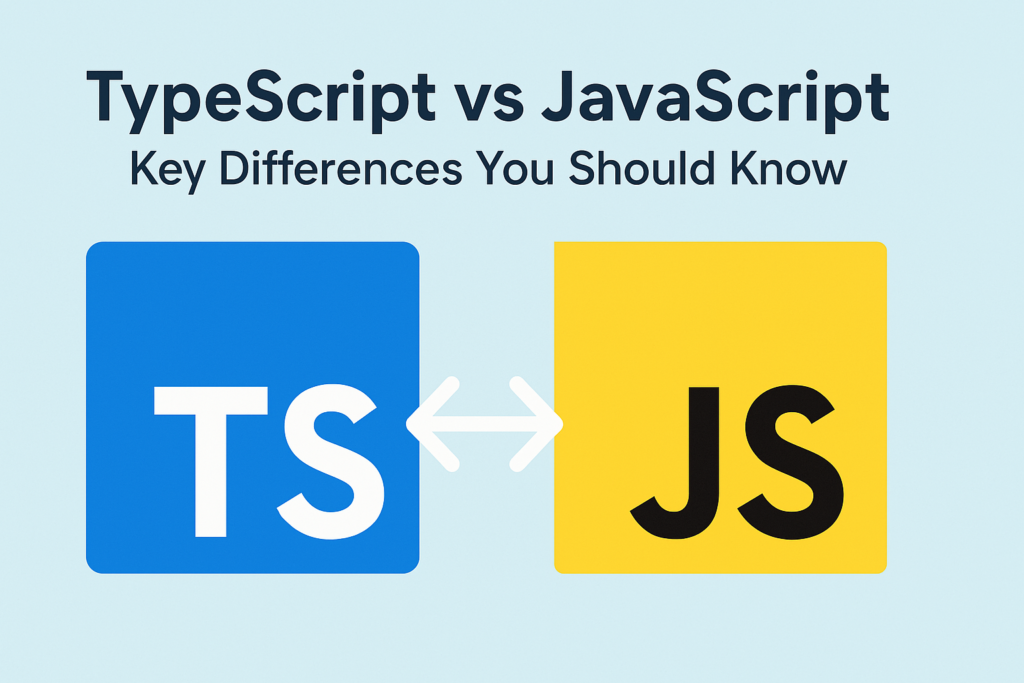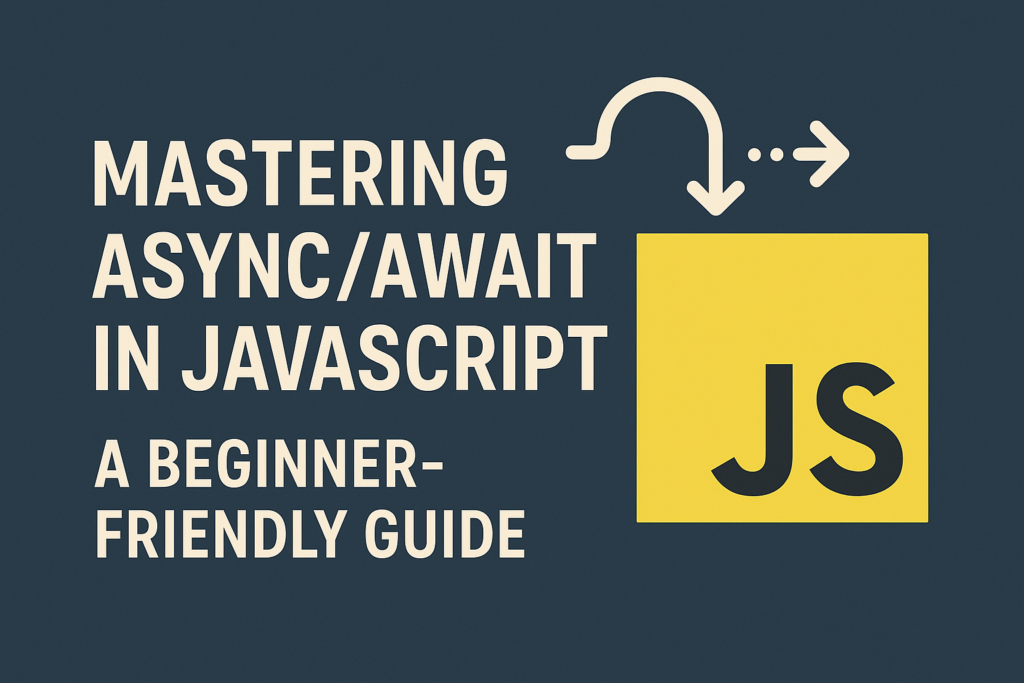
If you’re learning web development, you’ve likely encountered both JavaScript and TypeScript. While they share a lot in common, understanding the differences between them can help you write better code and choose the right tool for your next project.
In this post, we’ll break down the key differences between JavaScript and TypeScript, their strengths, and when you should use each.
🟨 What Is JavaScript?
JavaScript is a dynamic, interpreted scripting language that runs in browsers and on servers via Node.js. It’s the backbone of modern web development — responsible for interactivity, logic, and data handling in web apps.
- Supports dynamic typing (types are inferred at runtime)
- Used in frontend, backend, and full-stack development
- Supported by every modern browser
- Requires no compilation
JavaScript handles asynchronous tasks using promises and async/await. If you’re new to this concept, check out our guide on mastering async/await in JavaScript for a beginner-friendly walkthrough.
🟦 What Is TypeScript?
TypeScript is a superset of JavaScript that adds static typing and other developer-friendly features. It was developed by Microsoft and compiles down to plain JavaScript.
- Adds type safety (string, number, boolean, etc.)
- Detects errors during development (before code runs)
- Improves autocomplete, refactoring, and readability
- Compiles to JavaScript for browser compatibility
🔍 Key Differences Between TypeScript and JavaScript
| Feature | JavaScript | TypeScript |
|---|---|---|
| Typing | Dynamic | Static (optional) |
| Compilation | Interpreted | Compiled to JavaScript |
| Tooling | Basic editor support | Rich editor support with IntelliSense |
| Error Handling | Runtime errors | Compile-time error detection |
| Interfaces & Types | Not supported natively | Fully supported |
| Learning Curve | Easier for beginners | Slightly steeper, but helpful long-term |
| Adoption | Universal | Rapidly growing in frameworks and teams |
🧪 Code Comparison Example
JavaScript:
function greet(name) {
return 'Hello, ' + name;
}
TypeScript:
function greet(name: string): string {
return 'Hello, ' + name;
}
With TypeScript, the types are clear and errors are caught early.
✅ When to Use JavaScript
- You’re building small scripts or simple web pages
- You want quick prototyping without a build step
- You’re learning the basics of programming and logic
✅ When to Use TypeScript
- You’re working on a larger app or team project
- You need better tooling and refactoring
- You want safer code and early bug detection
- You’re using frameworks like Angular, Next.js, or NestJS
Curious why so many developers are switching to TypeScript? Learn more in our detailed post on why TypeScript is taking over JavaScript.
🔗 Related & Useful Resources
🧠 Final Thoughts
Both JavaScript and TypeScript are powerful — and TypeScript doesn’t replace JavaScript, it enhances it. You don’t have to choose one forever. You can even use TypeScript gradually, adopting it file by file.
If you’re building something that will grow, TypeScript is absolutely worth learning.

